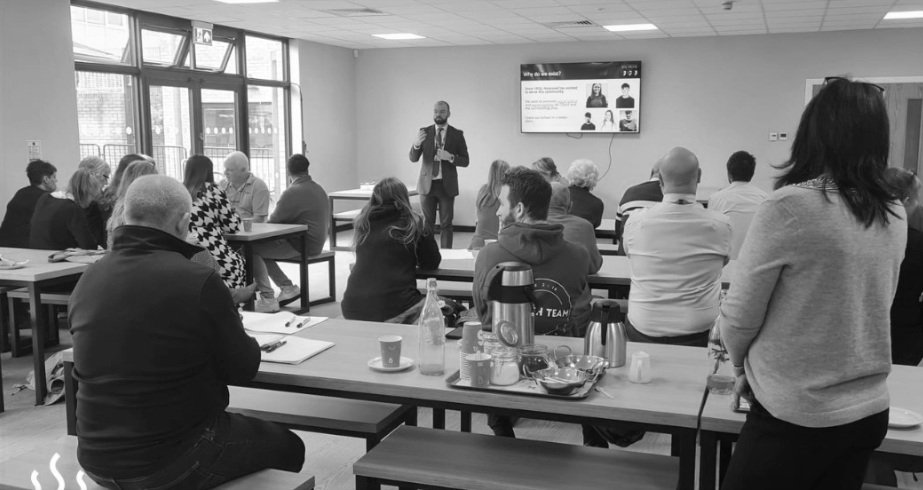What we’ve learnt (so far)
Today, we are working with around 30 schools and trusts across the country—from Teeside in the North East to Newquay in the South West—and, although it is early days for many partners, new models and signs of deeper integration into communities are starting to emerge.

Report: “Heart of the Community”
The University of Exeter's report on The Reach Foundation's Cradle-to-Career Partnership emphasises the evolving role of schools as community anchors. The report, co-authored by Dr Anne-Marie Sim and Professor Lee Elliot Major, identifies eight foundational steps for developing C2C models and highlights 15 common practices observed across four case studies.

How Holyrood Academy is bridging gaps and building futures in Chard
Holyrood Academy in Chard, Somerset, is demonstrating how schools can play a vital role in developing a joined-up, local response to improve children’s outcomes.

How Chiltern Primary School is becoming a force of support and advocacy in Hull
Thrive’s Chiltern Community Hub in Hull has redefined parental support with its innovative 'Chat and Choose' initiative. What began as a simple foodbank-coffee morning hybrid has evolved into a vibrant space for community engagement, offering families essential resources, parenting classes, and a welcoming environment to connect. By prioritising relationships and trust-building, Thrive has empowered parents, reduced social isolation, and improved school attendance to 96.4%. This case study illustrates how relational approaches and strategic collaboration can create lasting change for underserved communities while strengthening the cradle-to-career pipeline.

How Cranbrook Education Campus is anchoring a new community in East Devon
At the heart of the UK’s youngest town lies Cranbrook Education Campus, a pioneering all-through school that embodies the Cradle-to-Career (C2C) approach. Designed to serve a community in its infancy, Cranbrook has placed families at the center of its mission, creating seamless transitions across early years, primary, and secondary education. By investing in trust-building and parental engagement, the school is not just supporting pupils academically but fostering a community that thrives together. This case study highlights how Cranbrook is leveraging its unique context to transform outcomes for children and young people, especially those underserved by traditional education models.

How King’s Oak Academy is rebuilding trust in South Gloucestershire
On the outskirts of Bristol, King's Oak Academy has ambitions to be the school of choice—not convenience—within its local community. Read about the work they’re doing to restructure the school to embed belonging, restore fractured school-community relationships and working in partnership with the local authority to secure improved provision for the whole community.

How The Ravensbourne School is bringing the outside in
Leaders at The Ravensbourne School in Bromley are taking a proactive approach to support students and their families. By deeply engaging with the local community, the school aims to address challenges and improve outcomes. Learn how their early forays in this work are starting to make a difference.

How CELT is increasing community capacity through the Bodmin Revival CIC
Cornwall Education Learning Trust (CELT) has partnered with the Bodmin Town Team to increase the institutional capacity needed to revitalise Bodmin’s town centre. Recognising the need for a unified approach, they are exploring the viability of establishing a Community Interest Company (CIC) to develop people and places simultaneously—repurposing vacant units in the town centre for educational and creative purposes.

How we can release the potential of (groups of) schools
Over the past decade, school and trust leaders have significantly improved educational outcomes by enhancing curriculum rigour and teacher training. However, to further close the gap between disadvantaged children and their wealthier peers, additional leadership strategies are needed. In this article, James Townsend explores six emerging characteristics of ‘Cradle-to-Career Leadership,’ aimed at fostering long-term success and holistic support for all children.
